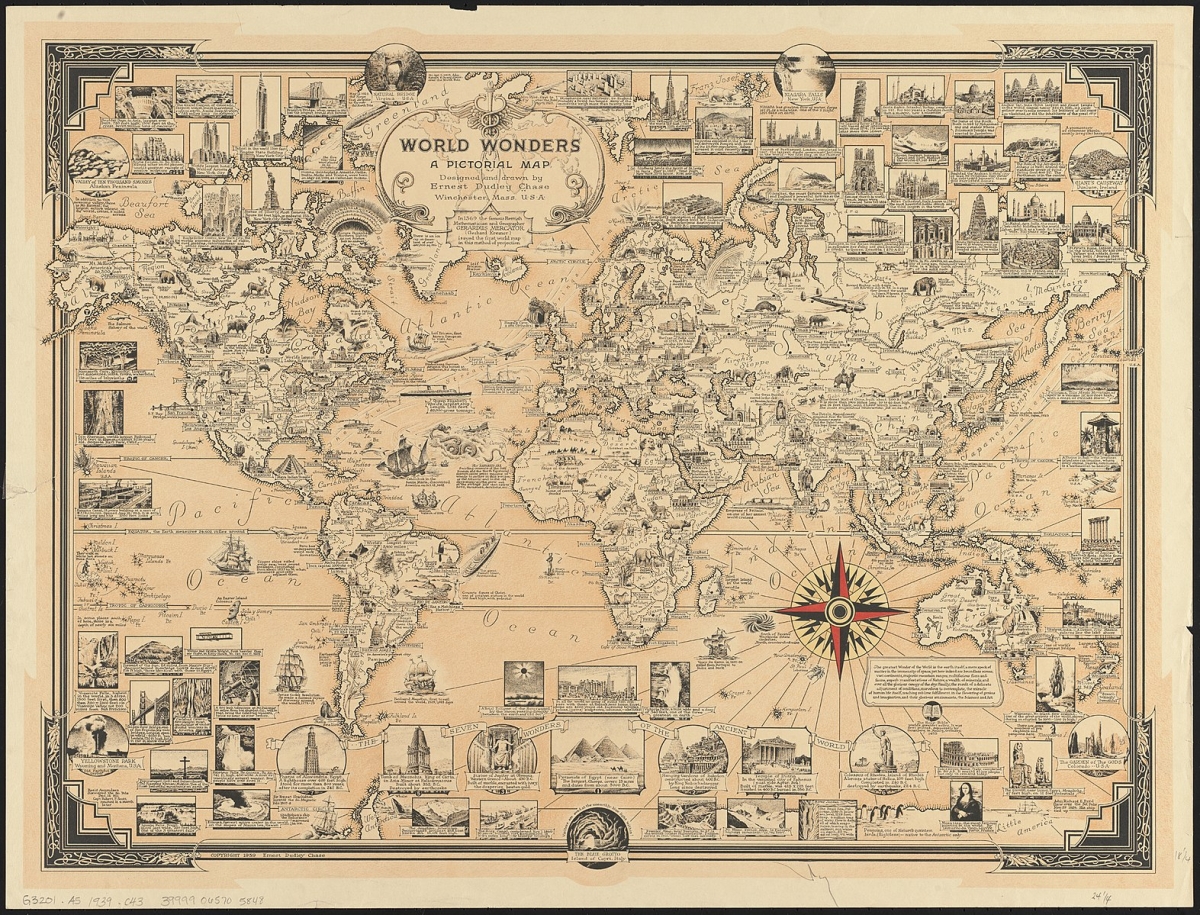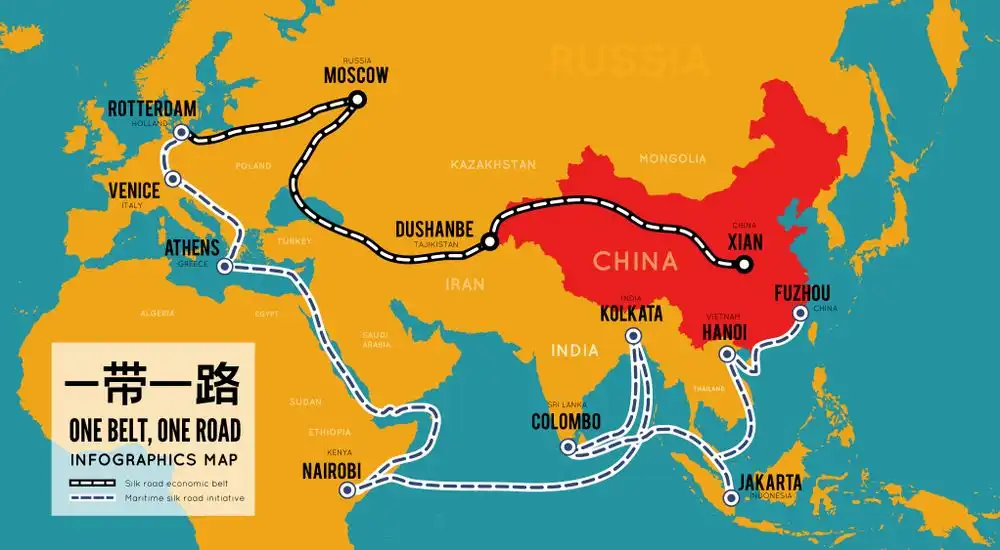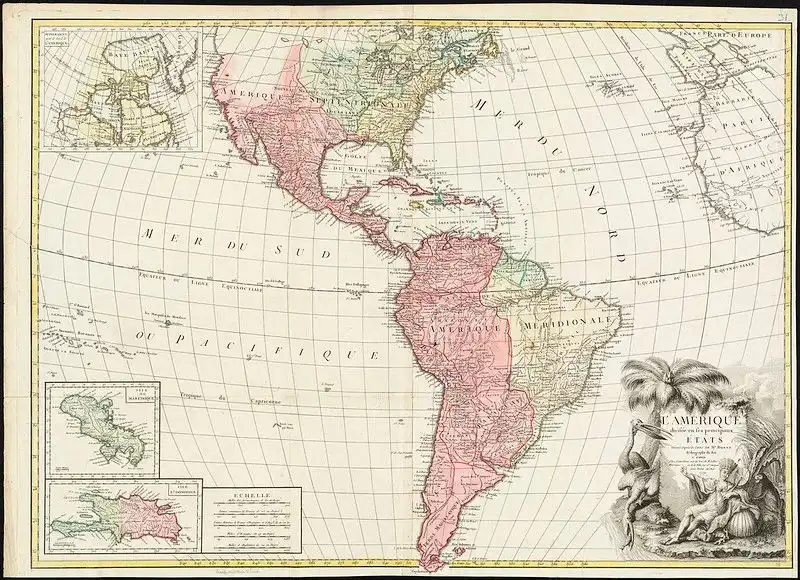Home>From the Region to the Global and its Many Narratives. Interview with Karoline Postel Vinay
20.11.2020
From the Region to the Global and its Many Narratives. Interview with Karoline Postel Vinay
CERI Sciences Po Research Professor Karoline Postel Vinay has been exploring for several years the concept of narratives of the global, through a de-centred (non-European) analysis of the international. What are narratives of the global, and why are there several narratives, sometimes competing? Where do regions stand in the global realm and are they an entity with a future? Karoline Postel Vinay answers our questions and helps us better grasp what history, also, has to do with the international.
You have been working for some time on what you call “narratives of the global”. Would you mind giving us an overview of what you mean by this concept?
Simply said, narratives of the global are the numerous “stories”, whether converging or conflicting, that actors (communities, institutions, states…) tell about what it is and what it means to share a global scene. I put quotation marks around the word “story” because narratives are more than stories, as the field of narratology has demonstrated through the works of literary critics such as Gérard Genette as well as philosophers such as Paul Ricoeur or the historian Hayden White, among others. What Ricoeur called “mise en intrigue”, or emplotment, is a social process through which individual or collective actors assemble disparate facts and events into a narrative form that makes sense of the present as well as the past and future. From the perspective of national or international politics, emplotment, i.e. the production of narratives, is a socio-political process with a purpose that can be the establishment of an order, the setting of an agenda, or a call for action. Here, producing, and imposing, a collective narrative becomes also a matter of power politics. In that sense, narratives constitute a very useful methodological tool to understand globalization, a notion that was never self-evident and that is increasingly contested.
So to talk about “narratives of the global” entails to acknowledge the fundamental plurality of the idea of the global, as well as to take stock of the diversity of actors and experiences that are sustaining this idea. At this time of crisis and extreme uncertainty, we are witnessing an inflation of narratives of the global, and a de facto battle of narratives, striving to impact both national and international agendas.
In a recent work, you argue that the definition of international regions (Europe, East Asia..) as “something in between” the national and the global, is misleading. You characterize the “region” as an entity in its own right, a “time-space object par excellence”, but that is also closely linked to the historical formation of the “global”. Can you tell us more about this link, and explain why the study of regionalism implies making sense of the global?
There is a rich body of works, spanning from the early 1950s up until today, on international regionalism and regionalization. This literature has illuminated the various ways and modes through which international regions are formed and built, but it has been rather restrained on the subject of the “region” in itself. In other words, it helps us understand processes and outcomes (how communities regionalize) but not so much entities (what is a region). Thanks to critical approaches to security, with authors such as Pinar Bilgin or Emanuel Adler, or critical geography, and Martin Lewis and Kären Wigen’s work on meta-geography, there has been some acknowledgement that regions are social, historically located, constructs. The early literature on international regionalism tended to consider the “region” as a quasi-natural given, but now most authors will at least pay lip service to a more constructivist perspective.
However there is still very little on what defines an international region in the first place. My hypothesis is indeed that the scalar/linear approach, i.e. the notion that the international region is defined by its scale, located somewhere between the national and the global, is not very fruitful. This approach tends to obscure the historicity of international regions. For example in Northeast Asia, the concept of region started to take shape in the late 19th century through that of regional solidarity, within the governing elite of Japan, China and Korea, as a reaction to Western power and domination.

World wonders: A pictorial map by Ernest Dudley Chase.
Source: Norman B. Leventhal Map Center at the BPL, Public domain, via Wikimedia Commons
Before that time, the international region as an entity made of a sub-part of the world, such as “Asia” or “East Asia”, had no currency; it was neither politically, nor geographically, a relevant concept. It became relevant when, as the English School of International Relations say, Europe’s international society expanded to the rest of the world, i.e. when the system defined in Europe became global. Along with its own understanding and regulation of international relations, European imperial powers imposed a specific idea of the global: the unification of codes, norms and rules on a planetary scale. Not only in Northeast Asia but in other parts of the world as well, there is a concomitance between this expansion of “made in Europe” globality and the shaping of the (international) regional vision. This is where a historically informed reflection on the global could meet the study of regionalism, or more specifically, of international regions.
What is the future of regions? Are there regions to come?
Regions, as they have been studied by the regionalism literature, are classically territorial. Even if the processes of regionalization that have been analysed are not territorial, as with “de facto regionalism” where regional dynamics have been shaped by flux and transactions that are mostly independent from territoriality, the framework within which those dynamics take place, i.e. the “international region” itself, has very much been understood as a territorial entity. All the more so that the said entities have been defined in terms borrowed from the (Western) repertoire of continental geography: geographical constructs such as the “Americas” or “Africa” (that are exogenous notions to the said Americans or Africans), and their sub-continental divisions. The political invention of “Asia-Pacific”—a region supposedly defined by an ocean, and undoubtedly by geopolitics—paved the way both to a re-interpretation of the regional concept and to a new understanding of regions, looking much more closely to their relation to power, as illustrated by the works of scholars around Arif Dirlik on the spatial imaginaries of the Pacific Rim. This was one indication of the transformation leading to what we are witnessing now: the new regions, the regions to come, are clearly moving away from continental thinking, and by doing so are fundamentally challenging the notion of regional border and bordering. The Chinese Belt and Road Initiative or so-called “new Silk Road” is the obvious illustration of that change: it is a project about connectivity and geopolitics that, literally, de-borders established regions from Asia to Europe via Africa.

One Belt, One Road illustration. Copyright: “My Portfolio”, on Shutterstock
You wrote that by looking at the prehistory of the field of International Relations (IR) one brings to light the European imperial projects legacies that sustain both notions of globality and regionality. So the archaeology of IR can help us understand the notion of region?
The international regionalism literature constitutes a sub-field of IR and, for some, more specifically of International Political Economy (IPE). In that sense the main body of works on regionalism shares with IR the same troubled relation with history and historicity. As Craig Murphy [1] stressed, the a-historical tendencies of IR traditional thinking concern not only its methodological approaches—leading to theories that are detached from both time and space—but also its own disciplinary trajectory—leading to a lack of self-reflexivity. This is particularly problematic if one tries to define entities like international regions that are, precisely, time-space objects. So indeed I think that a more self-reflexive and historically informed IR, can change the study of international regions in a way that focuses more on regionality and less on regionalization.

L’Amérique divisée en ses principaux Etats, Bonne, Rigobert, 1779.
Source: Norman B. Leventhal Map Center. Copyright: CC commons.
The prehistory of IR as a discipline can be traced back to the height of European imperialism. At the core of the various European imperial projects was an obsession with globality and a novel idea of what the “global” meant: it was a cognitive and geopolitical ambition and in practice it aimed at the making of a unified international scene regulated by common codes and rules that in fact were overwhelmingly, if not exclusively, defined in Europe. Those codes and rules embodied the so-called “standard of civilization”, which in turn fed the (in)famous motto of “civilizing mission”. This is where globality encountered regionality. Because the new globality implied, paradoxically, a clear and hard hierarchy, it also entailed the production of sub-global areas. As Europe was deemed as a civilizing leader, continents or sub-continents started to be conflated with spaces of civilization, spanning from more or less “civilized” to not “civilized” at all. From the perspective of the dominating powers, the new global space of international order was hence re-divided into geo-civilizational entities. From that of dominated nations (such as China, Korea or the newly independent nation-states of Latin America) or the colonized ones, the remapping of the world was eventually instrumentalised, where the “region”, either continental or sub-continental, became a space of contestation, mediation and negotiation conveyed by a novel notion of regional solidarity. It has encompassed a variety of experiences and trajectories, from Bolivarianism and late 19th century pan-Asianism, all the way to Bandung, Afro-Asian friendship and the post-1945 creation of regional organizations.
Those regional legacies that are, in themselves, well known and well documented, need to be understood in relation with the historical making of globality, in order to analyse why international regions are relevant political spaces. And this brings us back to “narratives of the global”. Regions provided, and still provide today, a space of differentiation whose purpose is also to interpret the meaning of the global. Established regions as well as regions to come, such as the Sino-centric “Belt and Road” area, all provide different narratives of the global.
Further reading
BULL, Hedley, WATSON, Adam (eds), The Expansion of International Society, Oxford University Press, 1984.
FULTON, Jonathan (ed), Regions in the Belt and Road Initiative, London, Routledge, 2020.
Kollektiv Orangotango (ed), This Is Not An Atlas: A Global Collection of Counter-Cartographies, Bielefeld, Verlag, 2018.
NI MHURCHU Aoileann, SHINDO, Reiko (eds), Critical Imaginations in International Relations, London, Routledge, 2016.
SAALER, Sven, SZPILMAN, Christopher (eds), Pan-Asianism: 1850-1920, Rowman & Littlefield, 2011.
References by Karoline Postel Vinay
POSTEL VINAY, Karoline, “Regionality and Globality. Two Sides of the Same Narrative,” In The Multidimensionality of Regions in World Politics, edited by Paul J KOHLENBERG and Nadine GODEHARDT. London: Routledge, 2020.
POSTEL VINAY, Karoline and Nadine GODEHARDT, “Connectivity and Geopolitics: Beware the ‘New Wine in Old Bottles’ Approach.” SWP Comment, no. 35 (July 2020), https://doi.org/10.18449/2020C35
POSTEL VINAY, Karoline, Diverse Political Narratives, Fed by Scientific Uncertainties, Dossiers du CERI, April 2020.
POSTEL-VINAY, Karoline, “European Power and the Mapping of Global Order” in Kalypso NICOLAIDIS, Berny SEBE, Gabrielle MAAS (eds), Echoes of Empire: Memory, Identity and Colonial Legacies, London, Bloomsbury, 2014.
Cover image: Al-Idrisi's World Map (1154). Copyright: public domain. Wikicommons
Interview by Miriam Périer, CERI.
[1] Murphy, Craig. 2007. “The Promise of Critical IR, Partially Kept.” Review of International Studies 33 (S1): 117–133.
Follow us
Contact us
Media Contact
Coralie Meyer
Phone : +33 (0)1 58 71 70 85
coralie.meyer@sciencespo.fr
Corinne Deloy
Phone : +33 (0)1 58 71 70 68
corinne.deloy@sciencespo.fr
